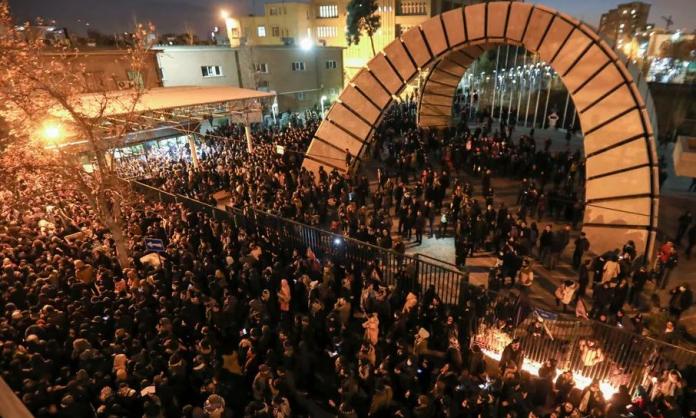Three things are clear about the COVID-19 pandemic in Iran. First, its scale is far greater than in many other countries – officially, it has the sixth highest death toll, after the US, Italy, Spain, France and the UK. Second, the true extent of the devastation is unknown – sources within the country claim that the situation is much worse than the government is letting on. Third, it has dampened overt resistance to the regime, but this is likely to be temporary.
The Iranian regime, confronted last year by the biggest mass protests since the revolution of 1979, responded to the virus with a mixture of obfuscation and cover-ups. After regime officials contracted the virus and the death of a senior adviser to supreme leader Ali Khamenei, the government took belated action. It was, however, nothing like what is needed to arrest the suffering and death now disproportionately ravaging the poor, the working class and ethnic minorities.
The virus emerged in February, in the holy city of Qom – the global centre of Shia scholarship, which attracts more than 20 million Muslims pilgrims each year. Situated 150 kilometres north of the capital, Tehran, Qom became a transmission site, spreading the coronavirus across the country. By early March, satellite images provided by a US space technology company appeared to show mass graves being dug at a cemetery in the city. Footage of body bags strewn across the floor of a local hospital was widely circulated. The hospital worker who filmed it was arrested.
There are widespread reports that, after the first cases appeared in Qom, the regime covered up the virus’s rapid spread and failed to implement quarantining. “The regime response was weak and exacerbated the health crisis”, Hussein, a student from the south of Iran, says via email. “As the outbreak of the virus coincided with the anniversary of the 1979 revolution celebration and the presidential election, the regime did not reveal to its own people that the coronavirus had already appeared.”
The neoliberal period has inflicted a heavy toll on the working class and the poor while regime elites have amassed untold fortunes. World health experts report that the number of cases and deaths in Iran could as many as five times higher than the official figures. People inside the country say it could be even worse than that. “Everyone you know, knows someone who has it”, Hossam, another student from the south of Iran, says via telephone. “Everyone knows someone who has died.” State-led privatisation under both moderates and hardliners has ravaged public health and social services. And austerity and attacks on wages and workers’ rights have deeply impoverished large sections of the population.
Read the article by Simone White at Red Flag.

